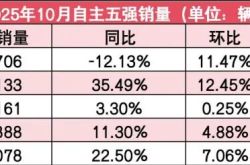Industry | China's First 'AI Plus' Action Policy Arrives, Balancing Popularization Support with Minimizing Disruptions
![]() 09/05 2025
09/05 2025
![]() 584
584
Foreword: A decade ago, [Internet Plus] laid the world's largest information superhighway in China, spawning new economic giants like Meituan and ByteDance. A decade later, [AI Plus] seeks to equip every industry with a 'cloud-based brain,' propelling a societal leap from [efficiency enhancement] to [value reconstruction]. Recently, the 'State Council's Opinions on Deepening the Implementation of the [AI Plus] Action' was officially released. Dubbed by industry insiders as China's first strategic action plan for [AI Plus], the document clarifies the roadmap for AI development over the next decade.
Author | Fang Wensan
Image Source | Network
The [Critical Window] for AI Adoption Reveals Dual Facets
At a press conference, the National Development and Reform Commission highlighted a core assessment: AI is currently in a '[critical window for application and adoption].'
Liu Zhi, Director of the AI Division at the National Information Center's Big Data Development Department, interprets this window as having '[two sides],' explaining the urgency of policy formulation.
Side A represents the '[dividend period of technological inclusivity].' Compared to when GPT first emerged, today's AI models have transcended single-language capabilities.
More critically, technological barriers are '[plummeting].' The cost of training a medium-scale model has dropped by 60% compared to 2023, while improved toolchains enable small and medium-sized enterprises to '[afford AI].'
Side B signals a '[countdown to strategic opportunities].' AI technological iteration is accelerating exponentially, with leading firms investing hundreds of billions annually to enhance model capabilities.
At the market level, pioneers are already erecting technological barriers. For instance, Chinese open-source large models dominate the top 15 spots on Hugging Face's rankings, with global developer counts for models like DeepSeek and Zhipu exceeding one million.
Lagging adopters will not only incur severalfold higher costs but also face irreparable time losses.
From an industrial foundation perspective, China possesses the confidence to '[seize] this opportunity: By 2024, the AI industry will exceed RMB 700 billion in scale, maintaining over 20% annual growth for years; total computing power reaches 280 EFLOPS, ranking as the world's fifth-largest cluster; and data production hits 41.06 zettabytes, providing '[ample nourishment]' for AI models.
With technology, capital, and data converging, the introduction of [AI Plus] becomes a strategic inevitability.
Three-Phase Goals: From 70% Penetration to a Smart Society
The document's most striking feature is its clear '[three-step]' objectives, each tied to profound socioeconomic transformations at specific time nodes.
① Over the next two years, AI will '[take deep root]' across six domains: science and technology, industrial development, consumption upgrading, Livelihood welfare (people's well-being), governance capacity, and global cooperation.
The most visible change will be '[over 70% penetration of next-gen smart terminals and intelligent agents].'
This implies that in three years, seven out of ten people around you may use AI-powered phones or smart home appliances. Workplaces will encounter '[intelligent assistants]' automatically summarizing meeting minutes, while primary-level hospital (grassroots hospitals) will deploy AI systems to diagnose common ailments.
② By the end of the '[15th Five-Year Plan],' AI will permeate from '[key sectors]' to all corners of the economy and society, with smart terminal and agent penetration exceeding 90%.
Behind this figure lies the assessment that '[the smart economy will become a key growth engine for China's economy].'
Similar to how the internet economy's GDP share surged after 2010, AI-related industries may contribute trillions of RMB to GDP by 2030, spawning a wave of '[AI-native]' enterprises.
③ The decade-ahead goal carries greater strategic stature: '[fully entering a new phase of smart economic and social development]' to support the basic realization of socialist modernization. This implies AI will reshape societal operational logic.
In urban governance, '[city brains]' will dynamically allocate transportation and energy resources; in public services, AI will bridge geographical divides in quality education and healthcare; and globally, China's AI technologies may become '[international public goods]' helping developing nations boost agricultural yields and improve medical conditions.
Xu Qiang, Director of the National Information Center, stated: '[AI Plus represents China's first participation in global productivity restructuring as a technological innovator, offering a new pathway for modernizing a super-large-scale economy.]'
From R&D to Livelihoods: How AI [+] Creates a New World
To achieve these goals, the policy outlines six key initiatives covering dimensions from technological innovation to global cooperation, each with concrete implementation scenarios.
① [AI Plus Science and Technology]: Previously, developing a new drug required screening millions of molecules over a decade at a cost of billions. Now, AI can precisely locate effective molecules like a '[smart magnet],' reducing R&D cycles to 3-5 years.
The document proposes '[accelerating scientific discovery]' by establishing AI as the '[fourth paradigm of scientific research]' alongside theory, experimentation, and computation.
For instance, DeepMind's AlphaFold2 cracked protein structure prediction, while domestic teams developed the DeepFlame platform, boosting rocket engine simulation speeds by a thousandfold.
In the future, AI will synergize with biomanufacturing, quantum technology, and 6G.
② [AI Plus Industrial Development]: Industry serves as the '[primary battlefield]' for AI adoption. The policy emphasizes upgrading traditional sectors while nurturing '[AI-native]' new business formats.
These enterprises are built with AI as their '[operating system]' from inception, rather than retrofitting it later.
Critically, the policy for the first time proposes '[full-factor intelligent transformation]' across primary, secondary, and tertiary industries. Manufacturing must cover design, piloting, and production; agriculture should develop smart machinery and breeding models; and services must upgrade from '[digital enablement]' to '[AI-driven transformation].'
Zheng Naning, an academician at the Chinese Academy of Engineering, said: '[AI Plus industry doesn't simply replace human labor but reconstructs production processes to revitalize traditional sectors.]'
③ [AI Plus Consumption Upgrades]: For ordinary people, changes in consumption will be most tangible. The policy advocates '[expanding new scenarios for service consumption],' such as making domestic services more personalized through AI.
Smart butlers will adjust service schedules based on elderly habits, while AI-recommended travel itineraries precisely match family needs.
[Cultivating new business formats for product consumption]' implies wider adoption of connected vehicles, AI phones, and smart homes, with potential for brain-computer interfaces and metaverse-related products in daily life.
In the future, AI will expand '[cognitive consumption]' and '[emotional consumption],' such as AI-generated personalized music and companion robots, satisfying higher-level human needs.
④ [AI Plus People's Well-Being]: The policy emphasizes AI's '[humanistic care]' by proposing '[smarter workstyles],' '[more effective learning methods],' and '[higher-quality lives].'
Addressing employment concerns, it proposes '[AI skills training]' and '[employment risk assessments]' to equip workers with new tools while mitigating structural unemployment.
[AI Plus Governance Capacity]: AI will enhance societal governance efficiency and precision. In security, it proposes '[creating a multi-stakeholder governance framework],' with AI applications in work safety supervision, disaster prevention, and public security early warning.
⑥ [AI Plus Global Cooperation]: Unlike certain nations' '[technological blockades],' China proposes '[making AI an international public good for humanity's benefit].'
For example, the low-cost version of domestic open-source model DeepSeek has gained popularity among African developers, aiding local agricultural monitoring and medical diagnostics.
China also initiated the '[Friends Group for International Cooperation on AI Capacity Building],' engaging over 140 countries in AI collaboration.
In the future, China's AI technologies may help developing nations build smart farms and telemedicine systems, extending technological benefits to more populations.
Models, Computing Power, Data: All Are Indispensable
Implementing [AI Plus] requires more than rhetoric—it demands tangible foundational support. The document proposes eight pillars of support, covering technology, talent, security, and policy across the entire chain.
① Models as the '[Brain]': Domestic models like DeepSeek, Alibaba's Qianwen, and Baidu's Wenxin have achieved international parity. The policy aims to '[enhance foundational model capabilities]' by improving training efficiency and establishing evaluation systems to avoid '[duplicative efforts].'
② Data as the '[Nourishment]': AI requires high-quality data, prompting proposals to '[improve data property rights systems]' and '[build high-quality datasets].'
③ Computing Power as the '[Engine]': Without sufficient computing power, advanced models cannot function. The policy proposes '[strengthening intelligent computing resource coordination]' by building mega-scale intelligent computing clusters, improving the national integrated computing network, and issuing '[computing vouchers]' to reduce enterprise costs.
④ Open Source as the '[Ecosystem]': Domestic open-source models account for 25% of global listings on Hugging Face. The policy encourages '[promoting a thriving open-source ecosystem],' incorporating open-source contributions into university credits and enterprise evaluations.
Open source not only lowers innovation barriers but also attracts global developers, fostering a '[collective effort]' ecosystem.
Additionally, talent development, policy frameworks, security, and application environments are included in the support system.
For example, '[strengthening talent development]' has seen over 2,400 enterprises collaborate with universities to train 6.2 million AI professionals.
[Enhancing security capabilities]' is emphasized, with the document mentioning '[security]' 12 times to address risks like AI '[hallucinations],' algorithmic bias, and intelligent agent hacking.
How [AI Plus] Differs from [Internet Plus]
Huo Fupeng, Director of the NDRC's Innovation-Driven Development Center, succinctly explains: '[Internet Plus] is about '[connection],' while [AI Plus] is about '[empowerment];' the former represents quantitative change, the latter qualitative transformation.
[Internet Plus] resolved '[information asymmetry]' by moving stores online, facilitating taxi-hailing, and accelerating information dissemination—essentially enhancing efficiency.
In contrast, [AI Plus] addresses '[cognition and creation]' by enabling machines to analyze data, assist decision-making, and even innovate autonomously—essentially reconstructing value.
In retail, [Internet Plus] enables mobile shopping, while [AI Plus] recommends products based on consumption habits and even designs personalized outfits.
In manufacturing, [Internet Plus] connects devices, whereas [AI Plus] predicts equipment failures, optimizes production parameters, and even autonomously designs new products.
[Internet Plus] laid the highway; [AI Plus] equips vehicles with autonomous driving. The former is infrastructure, while the latter maximizes its value.
This leap signifies China's economic transition from factor-driven to innovation-driven growth, and from scale expansion to quality-and-efficiency-focused development—the core of new quality productivity.
Conclusion
The 'Opinions on Deepening the Implementation of the [AI Plus] Action' is not merely a policy document but China's '[manifesto]' for the intelligent era.
A decade ago, [Internet Plus] transformed our lifestyles; a decade later, [AI Plus] will reshape production, learning, governance, and even thinking patterns.
Just as we couldn't fully envision smartphones' impact a decade ago, today's AI future remains partially unseen.
However, one certainty exists: Those who proactively embrace change and participate in innovation will ultimately benefit from the intelligent era.
Partial References: 21st Century Business Herald: '[AI Plus] Policies Herald Opportunities in These Sectors,' CITIC Securities Research: '[AI Plus] Action Opinions Issued, Embodied Intelligence to Benefit,' Synced: 'National Framework for [AI Plus]: China's 10-Year, Three-Phase AI Strategy Unveiled,' Liu Run: 'What Does the State Council's Major AI Policy Actually Say?,' Chaos Academy: 'National Team Leads: A Comprehensive Guide to the State Council's [AI Plus] Action Plan']





